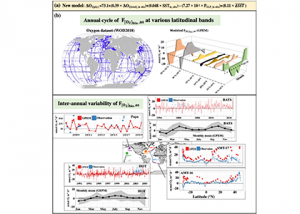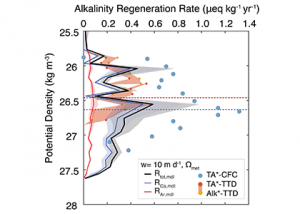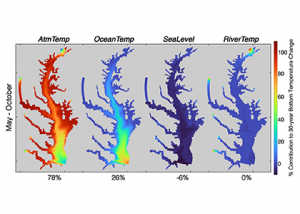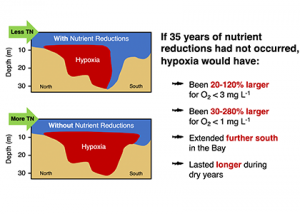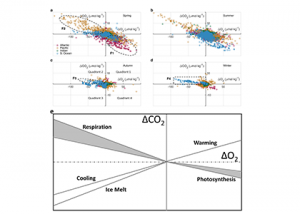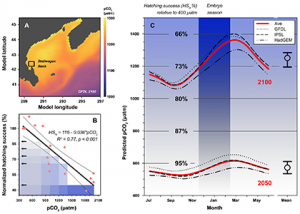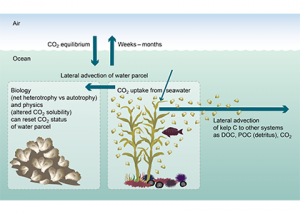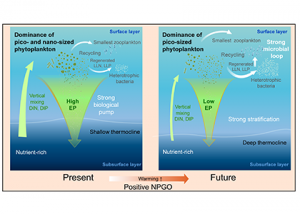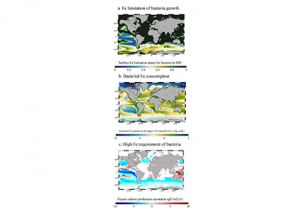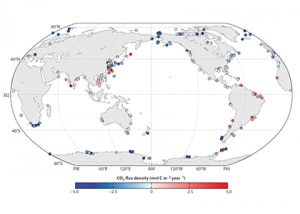If you would like to have your recent publications featured on the OCB website please contact ocb_news@whoi.edu. View our guidelines for writing a New OCB Research post.
Dissolved oxygen (O2) is a central observation in oceanography with a long history of relatively high precision measurements and increasing coverage over the 21st century. O2 is a powerful tracer of physical, chemical and biological processes (e.g., photosynthesis and respiration, wave-induced bubbles, mixing, and air-sea diffusion). A commonly used approach to partition the processes controlling […]
Read MoreThe marine carbon and alkalinity cycles are tightly coupled. Seawater stores so much carbon because of its high alkalinity, or buffering capacity, and the main driver of alkalinity cycling is the formation and dissolution of biologically produced calcium carbonate (CaCO3). In a recent publication in GBC, the authors conducted novel carbon-13 tracer experiments to measure […]
Read MoreCoastal water temperatures have been increasing globally with more frequent marine heat waves threatening marine life and nearshore communities reliant upon these ecosystems. Often, this warming is assumed to be uniform in space and time; however, this is not the case in the Chesapeake Bay, where warming waters play a major role in exacerbating low […]
Read MoreHypoxia is currently one of the greatest threats to coastal and estuarine ecosystems around the world, and this threat is projected to get worse as waters warm and human populations continue to increase. Over the past 35-years, a massive effort has been underway to decrease hypoxia in the Chesapeake Bay by reducing nutrient input from […]
Read MoreA recent study in Communications Earth & Environment, examined spatiotemporal patterns of the two dissolved gases CO2 and O2 in the surface ocean, using the high-quality global dataset GLODAPv2.2020. We used surface ocean data from GLODAP to make plots of carbon dioxide and oxygen relative to saturation (CORS plots). These plots of CO2 deviations from […]
Read MoreTwo decades of ocean acidification experiments have shown that elevated CO2 can affect many traits in fish early life stages. Only few species, however, show direct CO2-induced survival reductions. This may partly reflect a bias in our current empirical record, which is dominated by species from nearshore tropical-to-temperate environments. There, these organisms already experience highly […]
Read MoreTerrestrial forests are well known as major carbon stores and are already used in carbon credit and offset schemes. In the coastal zone, seaweeds have a similar functional role to trees (carbon dioxide fixation, primary production) and on this basis are being promoted for use as carbon offsets. However, compared to terrestrial forests in which […]
Read MoreThe eastern North Pacific subtropical gyre (NPSG) ecosystem contains a large proportion of the ocean surface, resulting in a significant impact on the global ocean primary production and export production. The NPSG is influenced by the interannual climate variabilities of the Pacific decadal oscillation and North Pacific gyre oscillation (NPGO). In particular, a recent report […]
Read MoreFree-living bacteria play a key role in cycling essential biogeochemical resources in the ocean, including iron, via their uptake, transformation, and release of organic matter throughout the water column. Bacteria process half of the ocean’s primary production, remineralize dissolved organic matter, and re-direct otherwise lost organic matter to higher trophic levels. For these reasons, it […]
Read MoreA vital part of mitigating climate change is the coastal and open ocean carbon sink, without this, it is not possible to meet the target set by the Paris Agreement. More research is needed to better understand the ocean carbon cycle and its future role in the uptake of anthropogenic carbon. A review provides an […]
Read More
